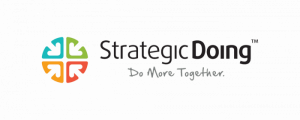FAQ
Below are some of our frequently asked questions.
We got you covered and here are our answers.
Click on JOIN US -> choose the community you want to join and click on sign up button. You will be redirected to CONNECTS platform sign up page. Fill in the required fields and click Submit button. Follow the instructions you receive via the email you provide in sign up page and you will be able to login to the community.
Strategic Doing provides a collaborative, flexible, and results-driven approach to problem-solving and action planning. It helps groups to achieve their goals more effectively by leveraging their collective strengths and resources.
There are a number of resources available for learning more about Strategic Doing, including training programs, books, and online resources. The Agile Strategy Lab at Purdue University is a good place to start.
The Strategic Doing methodology was developed by a team of researchers and practitioners at Purdue University’s Agile Strategy Lab, led by Dr. Ed Morrison.
Click on JOIN US -> choose the community you want to enter -> click login, put your credentials and you are in the community.
Strategic Doing is used by a wide range of organizations, including businesses, government agencies, educational institutions, and community development organizations.
Strategic Doing is a more agile and collaborative approach to strategic planning that emphasizes action and results over detailed planning and analysis. It is designed to be used in situations where the environment is constantly changing and traditional planning approaches are not effective.
The length of a Strategic Doing session can vary depending on the complexity of the problem being addressed and the number of participants involved. However, sessions typically range from a few hours to a full day.
No, Strategic Doing can be used by organizations of all sizes, from small businesses to large corporations. It is also used by community development organizations and other non-profit organizations.
Yes, Strategic Doing can be used to address a wide range of problems, from business challenges to community development issues. It is particularly effective for complex, multi-faceted problems that require a collaborative approach.
